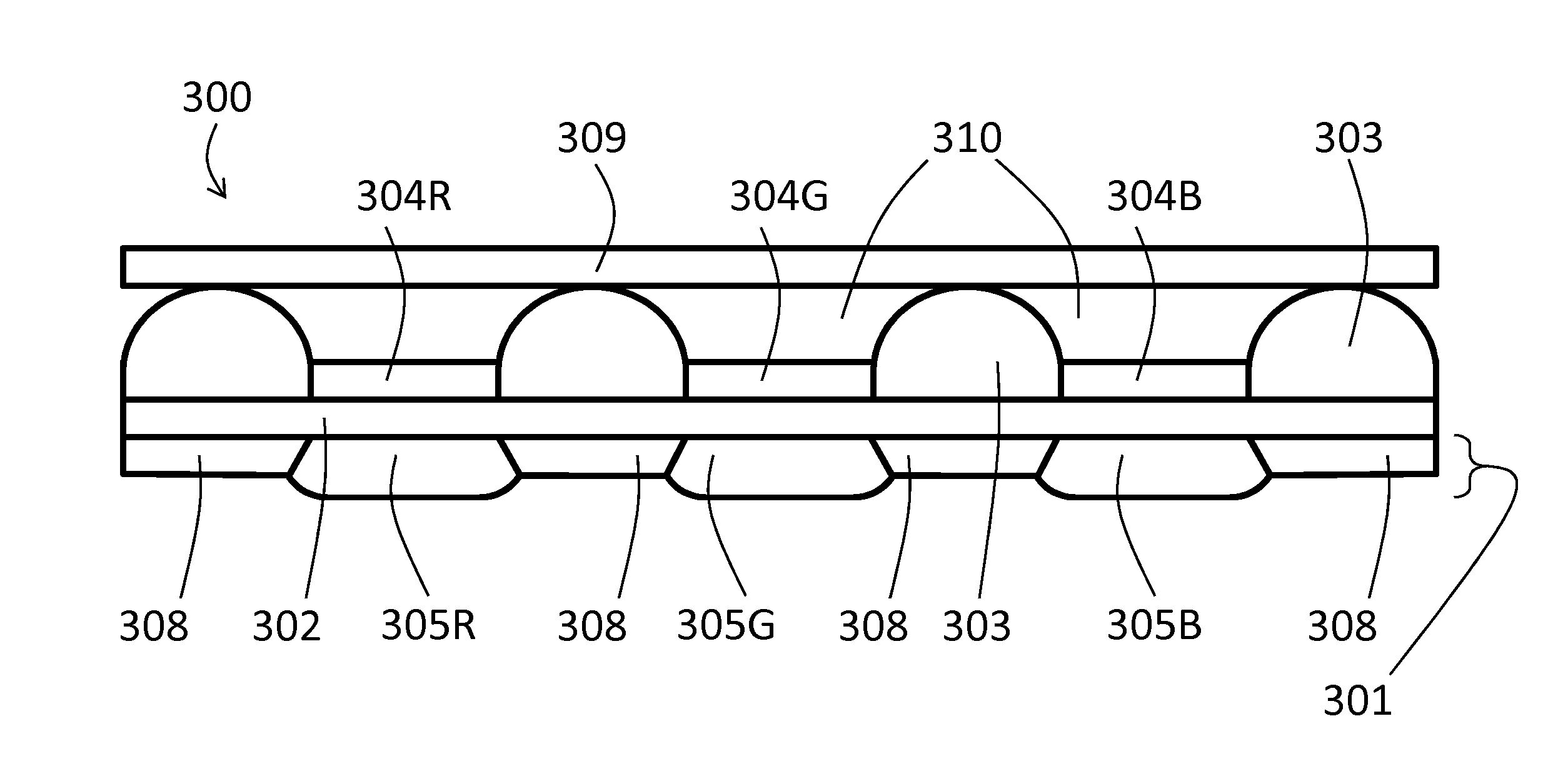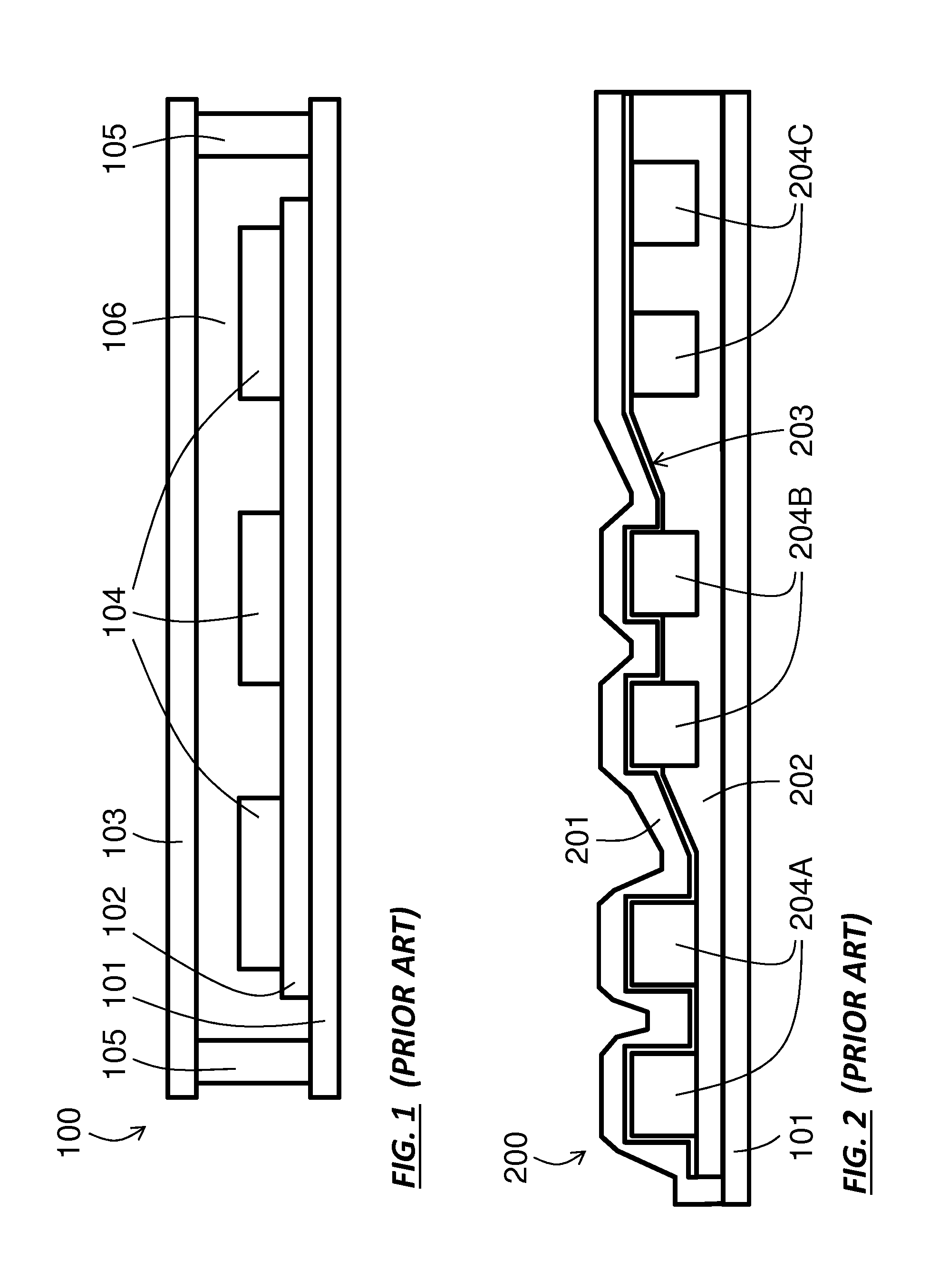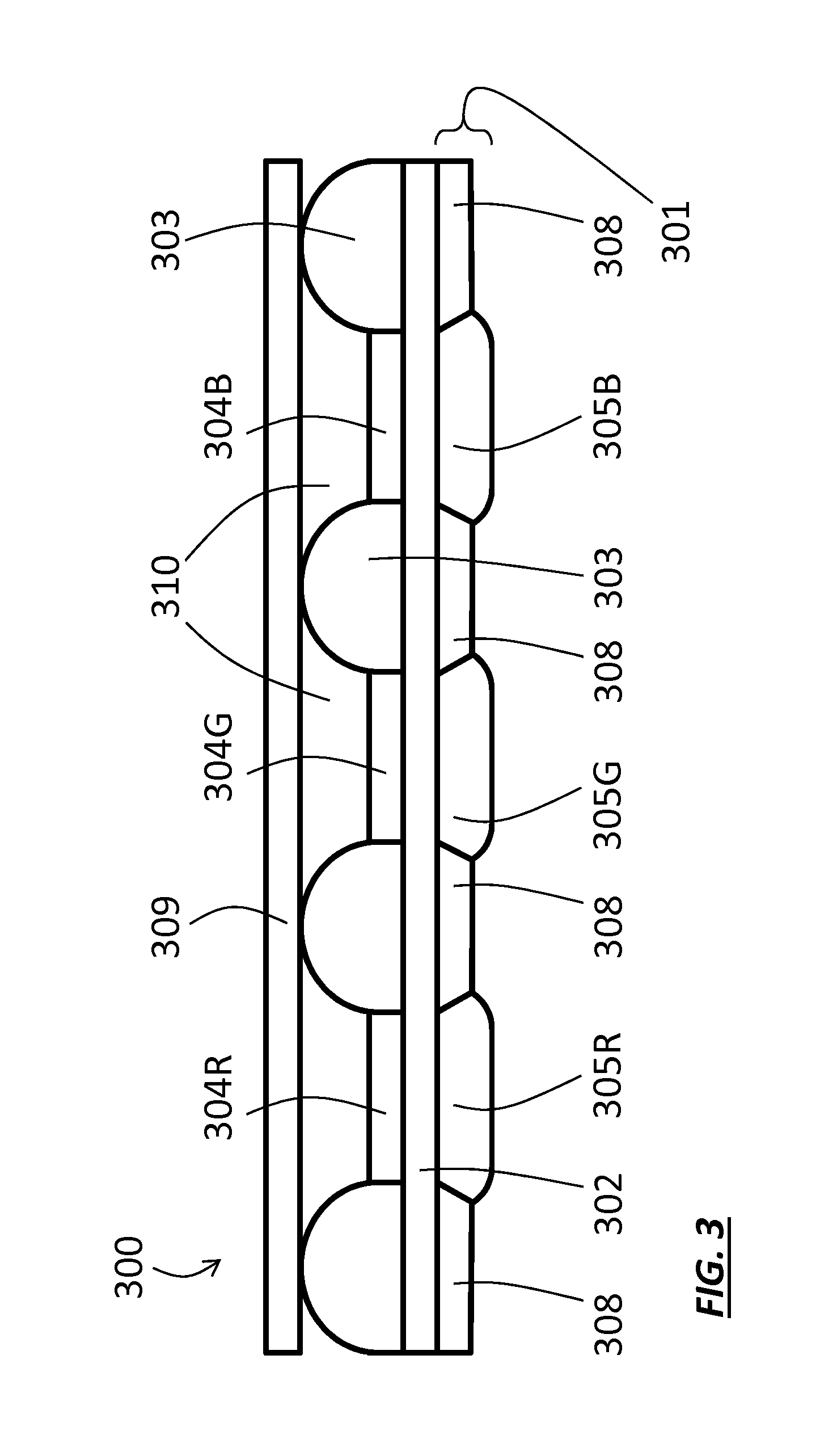Local seal for encapsulation of electro-optical element on a flexible substrate
a technology of electro-optical elements and local seals, which is applied in the field of local seals for encapsulation of electro-optical elements on flexible substrates, can solve the problems of limited heat tolerance, limited tolerance of optical elements, and limited tolerance for heat, and achieves the effect of ensuring the flexibility of finished light-emitting products and low permeation rates
- Summary
- Abstract
- Description
- Claims
- Application Information
AI Technical Summary
Benefits of technology
Problems solved by technology
Method used
Image
Examples
first embodiment
[0089]FIG. 3 depicts a first embodiment of the present invention. Panel 300 comprises electro-optical elements 304R, 304G, 304B formed over a lower substrate 301. Electro-optical elements 304R, 304G, 304B are part of a two-dimensional array of electro-optical elements 304 formed over the substrate 301. (Two-dimensional arrays of elements are discussed further, below, in context of FIG. 22.) Lower substrate 301 comprises a matrix 308 having light-transmissive local seals 305R, 305G, 305B formed as windows in the matrix 308. In preferred embodiments, and as shown in FIG. 3, each electro-optical element 304R, 304G, 304B has a respective local seal 305R, 305G, 305B positioned directly below it. Between lower substrate 301 and electro-optical elements 304R, 304G, 304B there may be intermediate layers variously including one or more of buffer layers, planarization layers, dielectric layers, banks, passive wiring layers, and active TFT layers: these are collectively represented in FIG. 3 b...
second embodiment
[0111]Turning now to FIG. 4A, panel 400 (shown in top view) is a preferred second embodiment of a lighting panel comprising light-emitting elements 404 separated by banks 303. Local seals 405 lie beneath each light-emitting element 404. The lighting panel may be part of a lighting fixture or other lighting product, either as a removable part or as an integrally fabricated component. FIG. 21F, adapted from U.S. Pat. No. 7,638,941 shows a ceiling-mount OLED chandelier 2160; each OLED panel 2167 is a removable unit.
[0112]Each light-emitting element 404 has a respective local seal 405. As shown, the local seals 405 are hexagonal and are arranged in a hexagonal pattern forming a two-dimensional array. Light-emitting elements 404 and local seals 405 are arranged in similar hexagonal patterns. Of course, other patterns are possible. For example, FIG. 21E, adapted from U.S. Pat. No. 6,870,196, shows an OLED lighting panel 2150 comprising a rectangular array of polygonal lighting elements 21...
PUM
| Property | Measurement | Unit |
|---|---|---|
| area | aaaaa | aaaaa |
| temperature | aaaaa | aaaaa |
| fusing temperatures | aaaaa | aaaaa |
Abstract
Description
Claims
Application Information
 Login to View More
Login to View More - R&D
- Intellectual Property
- Life Sciences
- Materials
- Tech Scout
- Unparalleled Data Quality
- Higher Quality Content
- 60% Fewer Hallucinations
Browse by: Latest US Patents, China's latest patents, Technical Efficacy Thesaurus, Application Domain, Technology Topic, Popular Technical Reports.
© 2025 PatSnap. All rights reserved.Legal|Privacy policy|Modern Slavery Act Transparency Statement|Sitemap|About US| Contact US: help@patsnap.com



